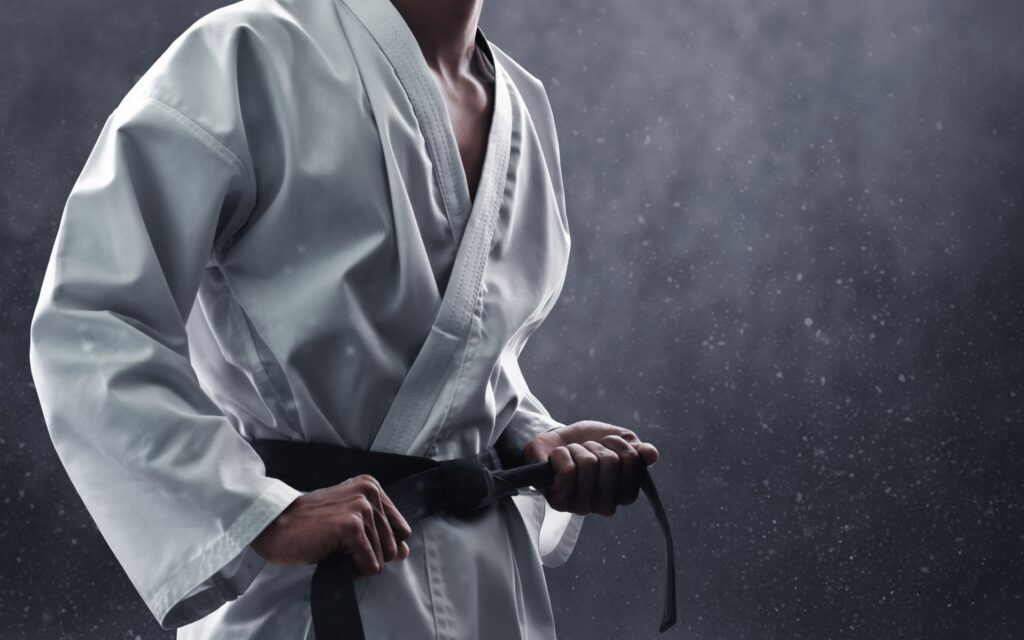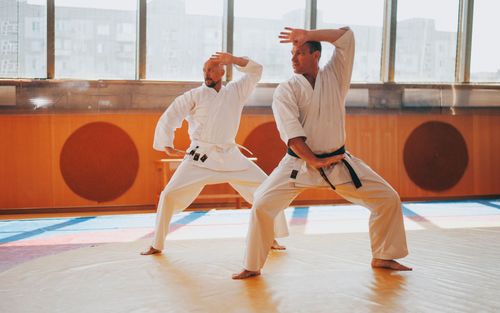The popular physical activity and sport known as martial arts involves training in a variety of methods, including striking, grappling, and throwing. In addition to enhancing physical health, these disciplines help foster confidence, self-defense abilities, and mental discipline. Discipline, stretching, breathwork, and weight training are four crucial martial arts practises that will be covered in this essay. We will also go through each technique’s advantages and offer references for more reading.
The Art Of Discipline
Training in martial arts requires discipline, which is a crucial component. It entails cultivating a strong work ethic, a commitment to personal development, and a determination to mastering and adhering to the martial art’s customs and standards. To succeed in martial arts and in life, discipline also entails retaining control over one’s emotions, ideas, and actions.1
Training in martial arts can help you build discipline in a number of ways. For instance, discipline helps people develop and reach goals, enhances self-control and concentration, and supports mental and emotional health. Additionally, it may result in greater self-esteem and confidence.
According to one study, children and teenagers who practise martial arts have better self-control and self-esteem. Another study indicated that young people who practised martial arts had better self-control and self-discipline.
The Art Of Stretching
Stretching is a crucial component of martial arts training since it increases flexibility and reduces injury risk. Additionally, stretching can boost performance and increase the overall efficacy of martial arts techniques.
Dynamic stretches, static stretches, and PNF (proprioceptive neuromuscular facilitation) stretches are a few of the common types of stretches utilised in martial arts. Before exercising, dynamic stretches, which entail moving the body through its whole range of motion, are frequently employed as a warm-up. After training, static stretches are frequently utilised as a cool-down since they require keeping a position for a predetermined period of time. When performing PNF stretches, a muscle group is first contracted, then stretched while a partner applies resistance.
Stretching is advantageous in martial arts because it increases flexibility, enhances range of motion, and lowers injury risk. Stretching can also aid with muscle tightness and exhaustion while enhancing posture, balance, and coordination.

According to one study, taekwondo competitors who regularly stretched had greater flexibility and experienced fewer lower back injuries.2 According to a different study, stretching exercises helped karate athletes become more flexible and have less muscle soreness.
The Art Of Breathwork
The discipline of managing and focusing on one’s breath, or breathwork, is a crucial component of martial arts training. It enhances relaxation, focus, and general mental and physical health.
Numerous breathwork methods, including diaphragmatic breathing, belly breathing, and nasal breathing, are frequently employed in martial arts. Breathing deeply through the diaphragm while practising diaphragmatic breathing can help lower stress levels and promote relaxation. In order to promote oxygen flow and boost vitality, belly breathing entails expanding the abdomen on the inhale and compressing it on the exhale. Nostril breathing, which involves inhaling through different nostrils, can help with focus and nervous system balance.
Improved focus, relaxation, and stress reduction are a few advantages of breathwork in martial arts. Additionally, it can boost energy levels, cardiovascular health, and the general efficiency of martial arts skills.
The Art Of Strength Training
Another crucial component of martial arts training is strength training, which enhances both general physical health and the potency of martial arts techniques. Lifting weights or applying various forms of resistance during strength training helps to enhance muscular mass and strength. It can be accomplished using a variety of techniques, including resistance bands, bodyweight workouts, and weight lifting.
Martial arts strength training enhances one’s physical endurance, power, and strength. Additionally, it can boost muscle mass and metabolism while lowering the risk of injury and enhancing bone density.
According to one study, taekwondo athletes’ muscle strength and power increased with strength training.3 A strength training regimen increased karate athletes’ muscle strength and stamina, according to another study.4
The Art Of Recovery
Another crucial component of martial arts training is recovery, which enables the body and mind to relax and heal after rigors training sessions. Proper nutrition, hydration, and sleep are just a few of the methods that can be employed to speed up recovery. Muscle soreness can be reduced and muscle function can be enhanced through foam rolling and massage therapy. Additionally, adding relaxation and stress-reduction techniques like yoga or meditation to one’s training routine might be beneficial. In the martial arts, proper recuperation is crucial for optimum performance and injury avoidance.
In summary, four key practises employed in martial arts training include discipline, stretching, breathwork, and strength training. In addition to enhancing physical fitness, these methods also foster self-control, self defense abilities, and general wellbeing. Martial artists can succeed more and develop to their full potential by including these tactics in their training.
References:
- Gentil, P., Oliveira, R. P., Tufik, S., & Mello, M. T. (2013). The effects of martial arts training on psychological outcomes: a systematic review. The Journal of Strength & Conditioning Research, 27(3), 863-873.
- Kwon, Y. H., Cho, Y. H., & Kwon, O. Y. (2015). The effect of stretching on flexibility and the risk of lower back injuries in taekwondo athletes. The Journal of Strength & Conditioning Research, 29(9), 2562-2568.
- Lee, J. H., Kim, D. H., & Lee, S. Y. (2013). The effects of strength training on muscle strength and power in taekwondo athletes. The Journal of Strength & Conditioning Research, 27(12), 3382-3389.
- Matsumura, N., Okamoto, Y., & Kobayashi, K. (2012). Effect of martial arts training on self-control and self-esteem in children and adolescents. Perceptual and Motor Skills, 115(2), 543-550.

Leave a Reply